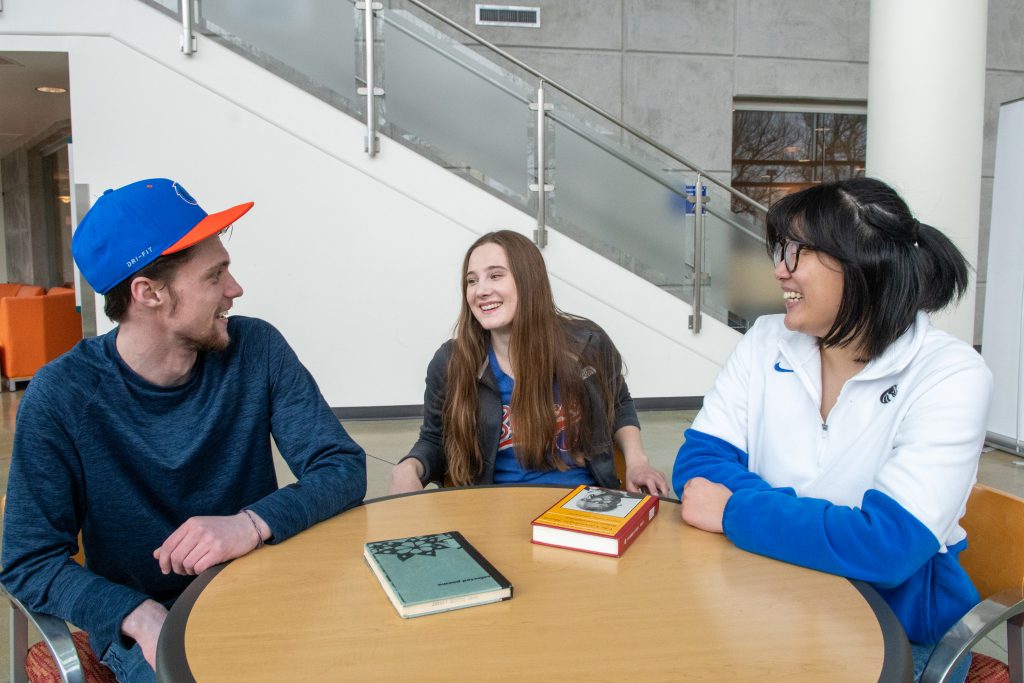
Willkommen auf Let’s Chat! German, a collection of interpersonal speaking activities for the German classroom.
Why a Collection of Interpersonal Speaking Activities?
Many language students consider the most challenging aspect of language learning to be speaking. What makes it so difficult? Out of the four skills (reading, writing, speaking, and listening), speaking is the only skill that actively requires the presence of another person. And yet, while tough, conversation or an innate desire to connect with others is often why our students enroll in language courses in the first place. They picture themselves traveling to new destinations, experiencing the target culture and engaging with native speakers. How can we best prepare them for this “real-world” experience in a language classroom?
Designing fun, authentic, and engaging speaking activities is often a time-consuming process, and we must develop our students’ ability to be spontaneous communicators. As a result, many instructors find themselves relying more on interpretive and presentational activities in their classrooms. While these activities are important to build valuable language skills, in our globalized world it is more important than ever that our students gain “the ability to use language in real-world situations in spontaneous interaction and non-rehearsed context and in a manner acceptable and appropriate to native speakers of the language” (ACTFL Proficiency Guidelines, 2012, p.4). We want them to have the necessary speaking and listening skills to thrive when they engage with native speakers outside of the classroom! Being able to confidently engage in spontaneous conversations is the best skill for students to be able to use their language skills in the real world.
Language learners need 720 instructional hours to reach the advanced level and only 320 of those are typical for most university foreign language programs (General Accounting Office). Even in a four year high school program, only “15% of students reach a proficiency level near Intermediate-Mid, even after approximately 720 hours of study” (CASLS 2010). In other words, it is critical that we provide our students with as many opportunities as possible to engage in interpersonal communication in their target language.
In our Let’s Chat! Series, we hope to make it easier for language teachers to implement spontaneous conversation into their curriculum by providing “classroom-ready” activities that are exciting and culturally relevant, with the goal of providing teachers interactive lessons that are easily adaptable in order to facilitate active language learning.
In this book, we’ve provided a foundation of over 100 activities that you can use with your students, but we hope that you won’t stop there! These activities are designed to be revised and remixed, meaning that we encourage you to adapt the materials to fit the needs of your students and add into new original content or from other open educational resources (OER). We encourage you to share your feedback and the materials you create by emailing us at Pathwaysproject@boisestate.edu. Together, we can build a comprehensive collection of German interpersonal speaking activities!
We look forward to hearing from you,
The Pathways Project Team
References
ACTFL. (2012). ACTFL Proficiency Guidelines 2012. http://www.actfl.org/publications/guidelines-and-manuals/actfl-proficiency-guidelines-2012
Center for Applied Second Language Studies (CASLS), University of Oregon. (2010). How Many Hours of Instruction Do Students Need to Reach Intermediate-High Proficiency? https://casls.uoregon.edu/wp-content/uploads/pdfs/tenquestions/TBQHoursToReachIH.pdf
United States General Accounting Office (2002). Foreign Languages, Human Capital Approach Needed to Correct Staffing and Proficiency Shortfalls. (No.GAO-02- 375). Washington, DC: Author.

